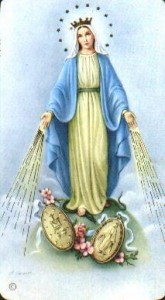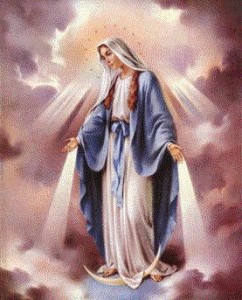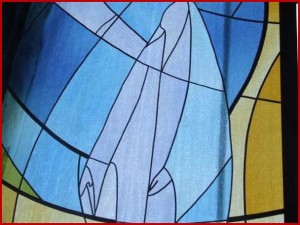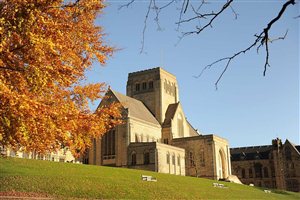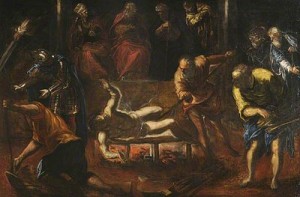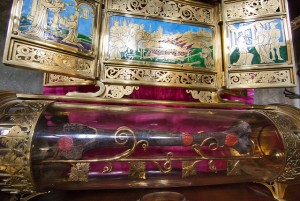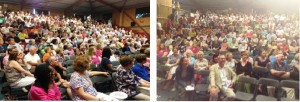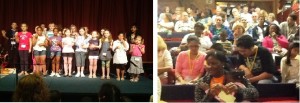It was late in the afternoon that I strolled that day to a neighbouring street to see a family that had suffered the loss of their son. He was young: just 34 years of age.
As usual, the parents were welcoming, offering a cup of tea, and we got talking about what had happened. Their young son’s partner was present, very quiet and demure. Quite soon the parents confessed to me: “We are not very religious, Father!” and, with that in mind, we continued our conversation, they eager to tell me about their son, and I listened quietly, saying little, but trying to support them in their sadness. After a period of about 25 minutes, I asked them if they would like to pray; at this, the father remarked simply, “it cannot do any harm”, and we said some traditional prayers together. In all of this, I felt for these two people, mother and father, as what can only be described as good and friendly people, involved in a very sad event in their lives: in no way did I ever feel at all superior to them, and it was as though I was learning from them and their tragic experience.
I left their house pondering on what had happened, and on the statement they had made: “We are not very religious, Father!” What can it mean when people say they are ‘not very religious’?
As I live, day by day, I do not think of, i.e. concentrate on, ‘being religious’. Rather, I struggle with being human. When I was a young and still a much ‘unformed’ person, I used to hear people saying to me: “Be yourself, Jonathan”, and in those days, I could not understand what such words of advice really meant. As I grew older and more mature, I began to realise that ‘being myself’ meant ‘giving of myself’, because by this time, I had discovered what ‘unselfish giving of love’, and the ‘unselfish receiving of love’ were all about; both terms describe actions that involve the undemanding ‘opening up’ of oneself to another; truly, I believe, they describe the essence of what makes us human. They are the basis for a right and proper human existence. Experience teaches us that life’s troubles come the way of each and every individual, and it is at such times, that it is more important to be giving of self. It is at such times that the open heart, giving of itself, can be seen manifest in the virtues, like patience, (with me, and others), fortitude, (in enduring difficulties), mercy, (when others, or I, let down God, or my neighbour), silence, (when that is called for), and speaking, (when that is also appropriate); overall endeavouring towards being helpful, rather than an obstacle to life’s progress. For myself, however, I still feel the need to be ‘formed’ more fully, even in my older years.
With the passing of years, also, I have discovered that it is only with others that I will be able to make my journey through this life. There is no other way, and the other person is no longer a threat, but always a gift for me. As the saying goes, ‘No Man is an Island’. This is because the same spark of love – that gift of God that I perceive in myself – I can also perceive in the other, but I do not consider this to be the essence of ‘being religious’. It simply makes for being more human!
During the day I like to talk to Jesus. In such moments, I am talking to a living human / divine being who knows my innermost thoughts and all the things that make up my life. I like to be in communion with Him, sharing with him, fully, in the joy of knowing him. He understands me and I know him as a friend who will never let me down. He rebuilds me within, when I know things have gone wrong, for whatever reason. He gives me the courage to make it up – reconcile – with others and with God. As to God the Father, it is not that he is ‘affected’ by anything I do, but I can realise that the relationship I have with him, is not right, from time to time. This is simply what it means to be human, and as humans, everyone needs relationships and help; each of us can give such help if we are so minded. In the final analysis, we are born in the same way that others are born, we die as others die, and between the two life-changing events, we need one another. We did not ask to be born – our life is a gift – and, once living, we do need to be fulfilling life’s purpose. I see the many suicides that occur as a sign that some, perhaps many, find little or no purpose in living.
As I remarked earlier, we are not ‘islands’, and to be human involves associating with others and the building up of a commonality. To belong to a community that worships, together, the Creator and Redeemer and the Holy One who give us life, is not especially religious, but a human reality. It is a part of a ‘common good’ for all, and that ‘common good’ leads to peaceful co-existence, and, much more positively, an enjoyment of the innumerable differences between us, but in harmony with others.
Hence I am not sure what ‘being religious’ means. Perhaps someone else could enlighten me?
Father Jonathan
